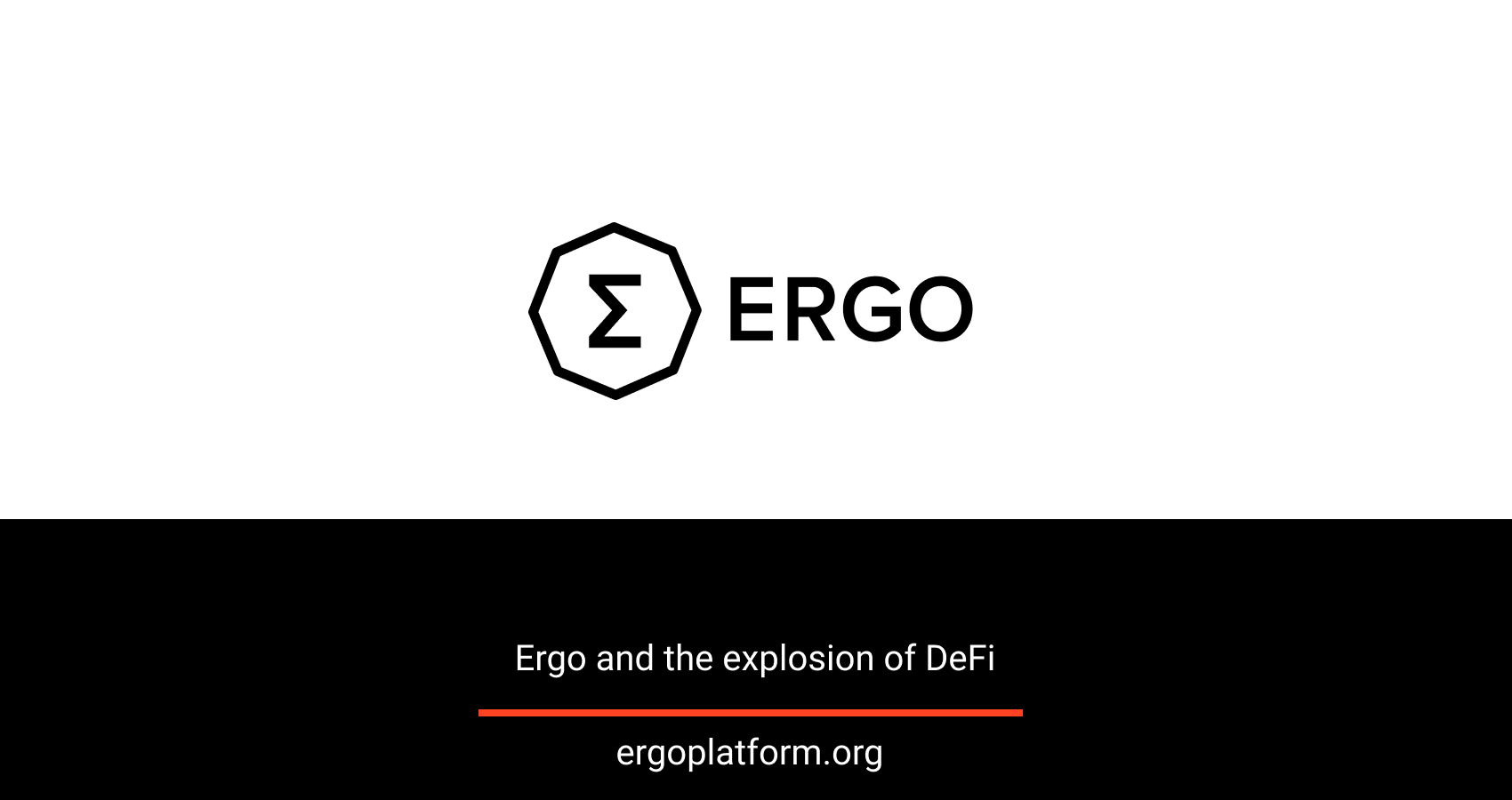
DeFi is the next major frontier for blockchain technology – but what does the current surge of interest mean for Ergo?
The narrative around blockchain technology is evolving in front of us. The use cases for smart contract platforms are becoming clearer by the day, encapsulated in the catch-all term of ‘DeFi’, or Decentralised Finance.
DeFi services are often much like their traditional counterparts, including lending and derivatives platforms, as well as more exotic services. Unlike their conventional analogues, though, these are open platforms, accessible by anyone and built with the transparency and security that come from the blockchains on which they are hosted.
The DeFi surge
The last two weeks have seen the nascent DeFi space change rapidly, catalysed by the launch of lending platform Compound’s governance token, COMP. One of the inherent benefits of DeFi is transparency, and the impact of this move can clearly be tracked on websites like DeFi Pulse.
Compound almost immediately took the top spot in terms of Total Value Locked (TVL), pushing the Maker Protocol into second place. From a baseline of $100 million, Compound rose to over $600 million TVL in only ten days, as tens of thousands of users flocked to take advantage of the platform’s distribution of COMP tokens in the new craze of ‘Yield farming’.
But it certainly wasn’t all back for the rest. In the same period of time, the Maker Protocol hit an all-time high for the amount of Dai generated using its Vaults. Meanwhile Sythetix, a synthetic assets platform, has doubled its TVL.
This is not like a bear market rally in the regular crypto world, where value is simply shuffled between BTC and alts, while the general trajectory is down. Something else is at work here.
Unconventional thinking
The reason may rest on another inherent property of DeFi platforms: composability. Because DeFi dApps are transparent and open, they can be built upon and adapted, creating new dApps easily. And then those dApps themselves can be plugged into other applications, adapted and redeployed in a virtuous circle of usage.
Compound’s rise goes hand-in-hand with the rise of other DeFi initiatives because it is so easy to connect different platforms in the DeFi world. It’s almost hard to view these as distinct platforms at all, when the boundaries are so porous. Assets can be leveraged, lent and deployed on one dApp in order to take advantage of the benefits currently offered by another. And there’s evidence – thanks to the transparency of the blockchain – that’s exactly what’s happening.
DeFi demands some unconventional thinking. Instead of viewing the sector in the fairly natural human terms of competition, who is #1 and what their lead is over #2, it requires a paradigm shift and a recognition that composability means collaboration by default. It’s not only desirable, but unstoppable – inseparable from what DeFi is, at its core. Open, collaborative financial services.
For Ergo, the surge of interest in the sector is an exciting development and confirms the decision to prioritise diverse smart contract and DeFi functionality. It also points to the need for interoperability between blockchains, enabling any smart contract protocol to interact with any other.
Ergo is well on the way to that end with atomic swaps, which will facilitate cross-platform activity – and ultimately, the use of ERG and Ergo assets in Ethereum and other blockchains’ DeFi services, and vice versa.
DeFi will clearly be a big part of financial services provision in the coming years, and Ergo will bring unique contributions to the space.
Share post